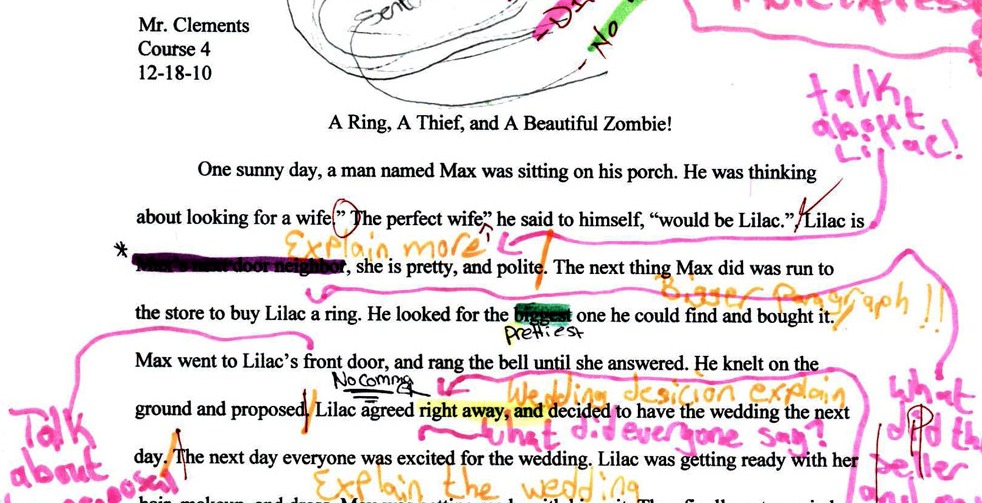Have someone edit your writing
Exchange short stories or essays with a peer or family member to receive feedback, learn revision techniques, and improve clarity and grammar.



Step-by-step guide to peer-editing short stories and essays
Editing Your Writing For Kids - Grammar, Punctuation, Capitalization, Spelling
Step 1
Choose one short story or essay you wrote that is about one page long to share.
Step 2
Find a friend or family member who will swap writing with you.
Step 3
Agree together on two simple rules: be kind and be specific and set a timer for the feedback time.
Step 4
Exchange your writing by handing over the paper or sending the file to each other.
Step 5
Read your partner’s piece silently one time to understand the main idea.
Step 6
Write a one-sentence summary of the piece at the top to check how clear it is.
Step 7
Circle or underline up to five sentences that seem confusing or unclear.
Step 8
Underline spelling or grammar mistakes and write a short correction or note next to each one.
Step 9
Write two specific compliments about things you liked in the writing.
Step 10
Write two clear suggestions the author could try to improve the piece.
Step 11
Swap back and read the feedback you received from your partner.
Step 12
Choose one suggestion to try first and revise your story to improve it.
Step 13
Share your finished creation on DIY.org
Final steps
You're almost there! Complete all the steps, bring your creation to life, post it, and conquer the challenge!


Help!?
What can we use if we don't have printed paper or a computer to exchange the story, or if we don't have a timer?
If you don't have printed paper or a computer file to exchange, use a notebook page or take a clear photo of your handwritten story to send, and use a kitchen timer or a phone timer for the feedback time.
What should we do if we can't write a one-sentence summary or we keep circling too many sentences?
If you can't write a clear one-sentence summary or keep marking too many lines, re-read the piece silently focusing on the main idea in the first and last paragraphs, highlight the topic sentence, and limit yourself to the five most confusing sentences as the instructions say while using the timer to stay focused.
How can we change the activity for younger or older kids while still following the steps?
For younger children have the partner read the story aloud and give one spoken compliment and one suggestion while an adult writes them down, and for older kids have them underline up to five confusing sentences and list three specific revision choices before choosing one to try.
How can we extend or personalize the activity after making the first revision?
Turn the chosen suggestion into a one-paragraph revision plan that lists steps (for example, fixing underlined grammar mistakes and rewriting circled sentences), then publish the revised story and a short reflection on DIY.org.
Watch videos on how to peer-edit short stories and essays
✏️ Editing Your Narrative | Narrative Writing for Kids | Part 7
Facts about writing and editing for kids
✍️ Proofreading catches surface errors like typos and punctuation, while revision reshapes structure, clarity, and meaning.
🎯 Kind, specific feedback (one thing that works + one clear suggestion) helps writers improve more than vague praise.
🔁 Many famous books underwent multiple full rewrites before publication — revision is where good writing gets great.
👥 Peer feedback helps writers spot unclear ideas faster — a fresh reader notices confusion the original author often misses.
📝 The writing process is often taught as five stages: prewriting, drafting, revising, editing, and publishing.
How do I organize a peer editing session so my child can exchange short stories or essays?
What materials do I need for a writing exchange and editing activity?
What ages is peer editing for short stories or essays suitable for?
What are the benefits of exchanging writing for feedback, and how can I keep it safe and positive?


One subscription, many ways to play and learn.
Only $6.99 after trial. No credit card required



